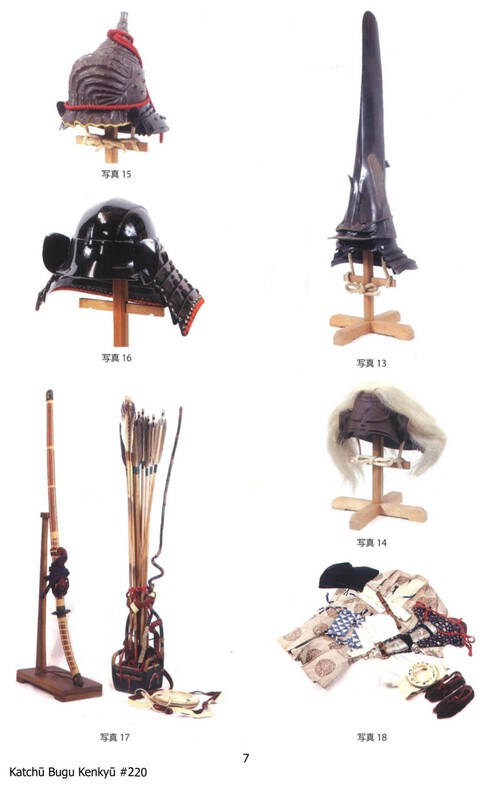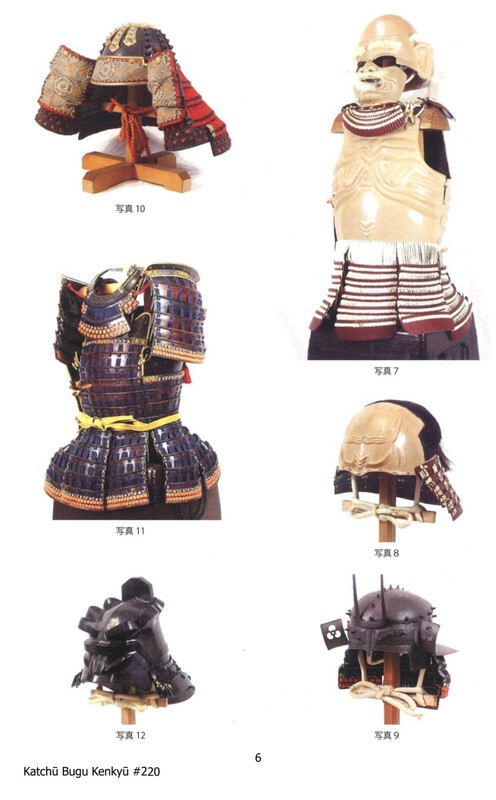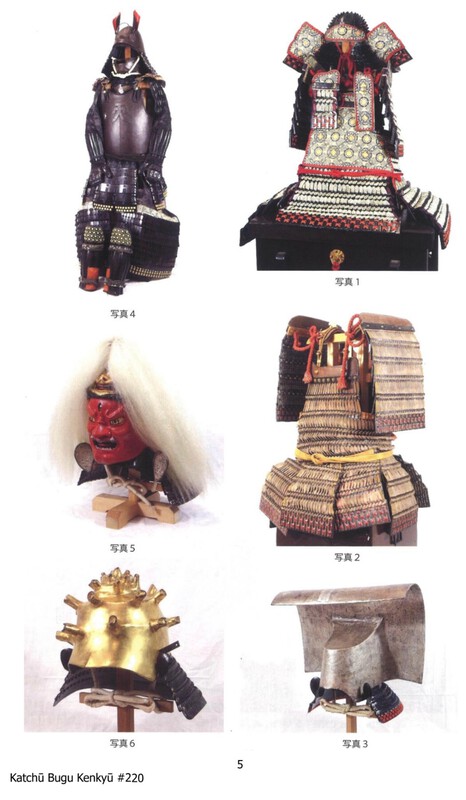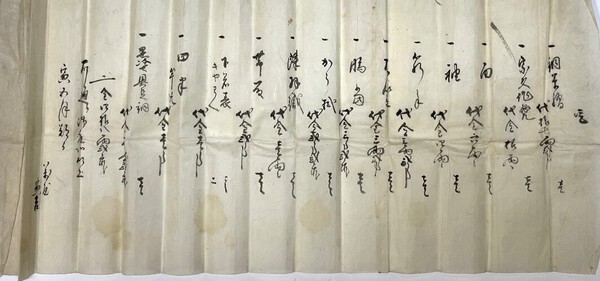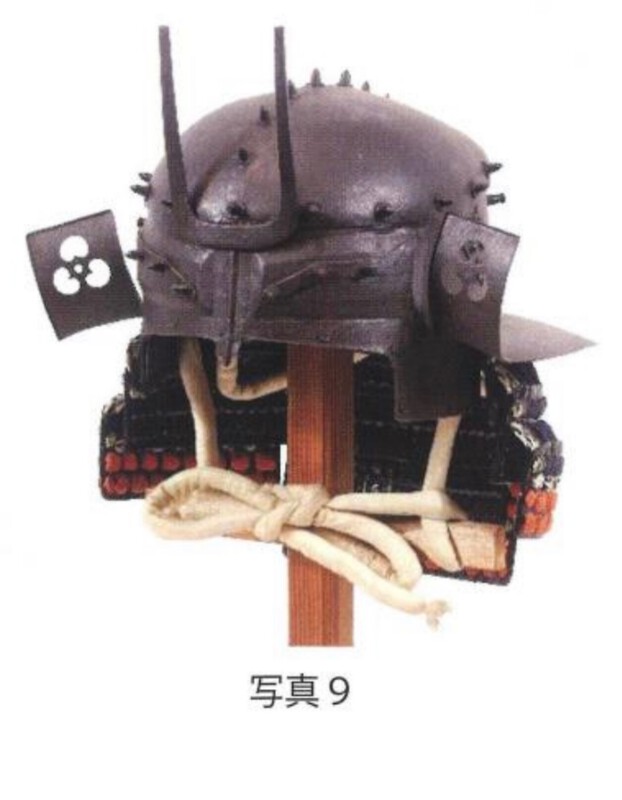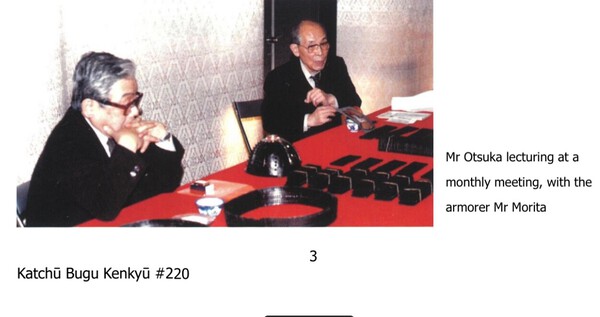-
Posts
1,847 -
Joined
-
Last visited
-
Days Won
19
Content Type
Profiles
Forums
Events
Store
Downloads
Gallery
Everything posted by Gakusee
-
I have actually tried ChatGPT with Juyo Zufu for which I have translations and sometimes the results are so far off, it is not even funny. For standard, non-technical subject matters where English resource material is prolific, it does reasonably well. For arcane subjects such as nihonto, in less intuitive languages such as Japanese and Chinese (where different alphabets and characters have different meanings subject to context or time-period usage), then caveat emptor. Be very careful as it mixes myth with fact, pulp fiction with history and blends things up. I made repeated attempts to teach it about Osafune, and within the same discussion thread, it did seem to pick it up somewhat. However, in a new dialogue, the knowledge was gone. It is a very advanced semantic model but that is what it is for now.
-
Fully matched, kamons in place, great kabuto smith, in great state of preservation, koshu tokubetsu kicho paper - what more to wish for Well done
-
Abalone or beetle, these are beautiful!. Thanks for sharing, Piers
-
Ah, that is a no. The regulations have been about for a while ....
-
One also needs to ask the question why the blade is not signed…..You know what the regulation in Japan stipulates
-

What on earth is going on with shinsa?
Gakusee replied to a topic in General Nihonto Related Discussion
John / Yulian: in fact this did happen a lot in the past. Blades which were either mumei, or with deliberately removed signatures, but bearing stylistic similarities to certain smiths subsequently have had applied to them the signatures of these aforementioned smiths. That is the whole idea behind gimei: you do not chisel a gimei signature on a random blade but on one that is close enough to be perceived to be by the putative smith. It goes even beyond that. Sometimes the styles of both workmanship and mei are close enough and a blade could switch attribution. For instance, I have seen Masatsune blades which at one point were deemed Bitchu Ko-Aoe but have also had Ko-Bizen attributions (admittedly these two Bizen schools were close in workmanship and geographic proximity). Similarly, even within Bitchu, there is a Masatsune that at one point was deemed Ko-Aoe and at another Senoo. Now that is a bit too close as they are both branches of Bitchu (most people just tend to lump these into the Aoe bucket) but nevertheless, it is still illustrative. I have held a blade which at one point was deemed to be an Osafune Kagemitsu (at Juyo ) and at another, Osafune Kagemasa (at TokuJu). It just happened that it was strategically clipped after the “Kage” character, with the rest of the signature intact. Now, of course these were master and student respectively but clearly close enough. Sometimes the NBTHK would uphold a blade as made by a certain smith but would qualify the mei as “to mei ga aru”, which means that they acknowledge there is the mei of the given smith but they have some doubts, or the signature is a bit off, but needs further study. Sometimes the qualification disappears in the passage from Juyo to TokuJu and they reaffirm the signature. My examples above are not pertinent to the NTHK NPO, but demonstrate the subtleties involved and how many nuances there are that go through experts’ minds, while we / collectors like sliced and diced and readily regurgitated answers. -
Thank you. Could you please elaborate on who judged the sword in your video as a Sanjo Munechika and what documentary background does it have? We appreciate your videos and input. Thanks
-

Tanobe sayagaki translation request.
Gakusee replied to Nanbokuchu's topic in Translation Assistance
Please refer to the brilliant publication by Markus Sesko: https://markussesko.com/2013/02/14/the-honami-family/ In there you will read about which generations are more reliable than others as well as the different types of mei: kinzogan, kinpun, shumei, shusho etc -

Tanobe sayagaki translation request.
Gakusee replied to Nanbokuchu's topic in Translation Assistance
…. which would make it a later Honami attribution (while we know this from the actual translation, it is a good standard shortcut when looking and kinzogan vs kinpun mei and are wondering about the dating / reliability etc of the attribution). -

What on earth is going on with shinsa?
Gakusee replied to a topic in General Nihonto Related Discussion
Yes, Colin, thanks. I was being unclear.Was wondering if we had images or seen the paper on the above blade which seems non-traditional to me too. The tanto you posted is a different kettle of fish - hand/traditionally made. -

What on earth is going on with shinsa?
Gakusee replied to a topic in General Nihonto Related Discussion
Is it worthwhile discussing / debating by whom and where the particular NTHK papers were awarded (domestically or in the US)? That might have some bearing on the fact that papers have been issued… -
Piers - that is as conclusive as it gets with no zokumei. Clearly the quality is the main reason for the attribution, supported by the date. Were the jiba not of sufficient quality and clarity, it would not have gone to Yosozaemon. Remember that he had a workshop full of students and helpers. It would have been a generic statement (in the other Juyo, there are such, stating it is a good quality Sue Bizen of Sukesada school). So quality first and foremost. Similar case with this one. Also ascribed to Yosozaemon.
-
Well, as you asked politely and nicely It does not happen often and is in fact rare. Normally they have to have a name such as Hikobei etc. But there are various Juyo Sukesada which are just Sukesada and without a specific name. This below has an interesting setsumei which speculates that it could be by Yosozaemon. As always, for advanced study and understanding, one needs to read / translate the setsumei.
-
The reality is that they cannot be 'sorted out' to a specific smith unless they are dated and named (or in very rare circumstances, the quality is very high and they are dated, so they go to the school head of the time). They are often generic, multitudinous and span several centuries. One could say 'well this does look like a Muromachi Sukesada' or 'this is signed Sukesada,the mei is a bit unusual for the Muromachi ones, so likely later one', or 'this is a Sukesada but the shape is not early', etc. Actually, people sometimes even struggle to differentiate between a kaziuchimono Sukesada from non-kaziuchimono one, let alone pinpoint a generic one. So with the more generic Sukesada, one can sort of veer towards a broad period and whether it is mass made or not.
-
Apologies, Grev - what are you trying to achieve with a new Sukesada post? Markus Sesko and Hawley have both listed and sorted various Sukesada smiths. If it is one of the master smiths, eg Yosozaemon, etc, usually the sword tang will bear the specific name or the NBTHK will have noted it. If the NBTHK have not noted one of the greats (Yosozaemon, Hikobei, Genbei, Hikozaemon) on the paper, then it is one of the many Sukesada smiths (or at best they might say something like 'late generation').
-
Agree. We just need to be very clear about the point in time we refer to and what monetary values were pertinent then. We cannot generalise over an extended period of time (end-Muromachi to end-Edo). Thank you for the interesting topic. I also recommend that people read this: https://nihonto.com/samurai-income/
-
The value of ryo fluctuated widely due to the debasement of the koban and diminished gold content (over a century, century and a half, it halved from the original 18.5g). So while 1 koku used to be worth 1 ryo = 1 koban, by the end of the 18 century, 1 koku was already worth over 5 ryo. So, calculations as the above are meaningless unless we know precisely when certain prices are quoted and then comparing these prices to the in-kind value of rice koku and also physical gold content (from the respective gold coinage at the time). So people are not comparing like with like in the commentary above.
-
Well, the NKBKHK article written by Nishioka san is very clear that all these were made by Otsuka san. That would make him a katchushi in my mind, as some of these seem quite sophisticated, but I am no expert to determine that, Andrew. The same magazine, after the article dedicated to Otsuka san, has a tribute to Miura san by way of a trilateral reminiscence by Ueda san, Yamasa and Jo Anseeuw in discourse format.
-
Thank you for posting them, Giuseppe; indeed these are top-notch items, from katchu to blades.
-
The hamon and shape and nakago sort of look in these photos consistent with Muromachi to Shinto Sukesada. But two things to note on the mei: - as Kiril intimated, it does look “blocky” (I think Geraint above also had some intuition about its appearance) - the usual early Sukesada mei starts with “Bizen [no] Kuni Ju Osafune…” while here I seem to see “Bizen [no] Kuni Osafune Ju…” -> food for thought….. Markus does however list some late Sukesada following the format here
-
Luc, it was not only kabuto but whole armours and also it looks like whole koshirae, accessories, etc. Chris, looking at what Otsuka san has made, if I were to extrapolate, I think if he probably put his mind to it he would have been able to make the rivets. Why he did not, I am not sure, but the skill and ability of that gentleman seems to have been very high. He also studied with professional katchushi. Below are excerpts from the magazine with his creations which the family donated for study purposes to the NKBKHK.
-
To revert back to the original post and original questions. I have been provided with an image of an Edo document outlining the prices for various parts of a Miyochin armour suit. Unfortunately, it is not fully translated but Markus Sesko has helped with some of the text (thank you very much, Markus!). do & kusazuri 7 ryō+ kabuto by Munehisa: 10 ryō, sode 4 ryō, kote 3+ ryō [something] 3+ ryo jinbaori 1 ryō etc The whole thing adds ups to a lot of gold coins…. More than 30 altogether 1 ryo=1 oban= 1 gold coin. There was some fluctuation over time in the gold content of a gold coin but that was a lot of money. 1 koku was roughly worth 1 ryu but it fluctuated a bit over time. I advise people to dig out Markus’ treatise “Sword prices, origami and samurai income”. In there he very clearly explains different salaries for hatamoto and gokenin (measured in both rice and coins). In early 18c, the vast majority of hatamoto earnt less than 400 koku. A lower ranked regional hanshi earnt less than 4 ryo pa. A top ranked hatamoto in court earnt 2000 (but had to pay two thirds in taxes and maintain various lower grade retainers and vassals and had to borrow money to fulfill his duties). I quote from the above Markus’ article directly: “Basically it can be said that the problem of shortage of money because of the obligatory duties to the bakufu was rife among all classes of samurai. High-ranking hatamoto with an income of from 1.000 to 3.000 koku were the worst affected, because top earners had certain reserves, and on the other hand the duties of the lowest ranks could be neglected.This becomes clear from the records of a samurai of the Chôshû fief with a basic income of 100 koku. After subtracting the cost of rice for feeding his family and seven obligatory retainers, he was able to change the remaining 17 koku and 4 sho of rice for 915 silver monme. From this amount, 120 monme was used for the rent of his house in Hagi (capital city of the Chôshû fief), 250 for a cook and a man, and the remaining 545 for food and clothes for a half year. If he could not cover the money for the other half through an officially approved second job.” So the armours we admire and see in auctions and at dealers… They cost a lot of money back then and very few people could afford them.
-
So, on that particular kabuto: another not fully professional but dedicated Katchushi enthusiast (and NKBKHK board member) in Japan, the late Ostuka san, also made a rather impressive replica. He apparently made a lot of armours and kabuto, even though professionally he was a company manager. I presume he will fall in Andrew’s “craftsman” category. But I was impressed by his various creations which were donated to the NKBKHK. Please see attached courtesy of the NKBKHK and their monthly magazine.









